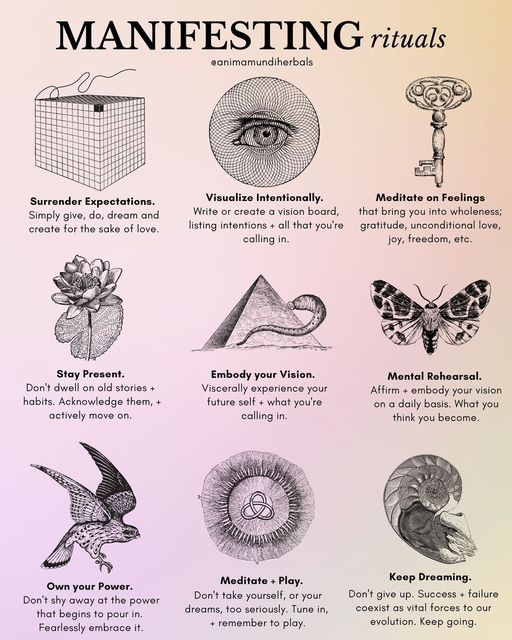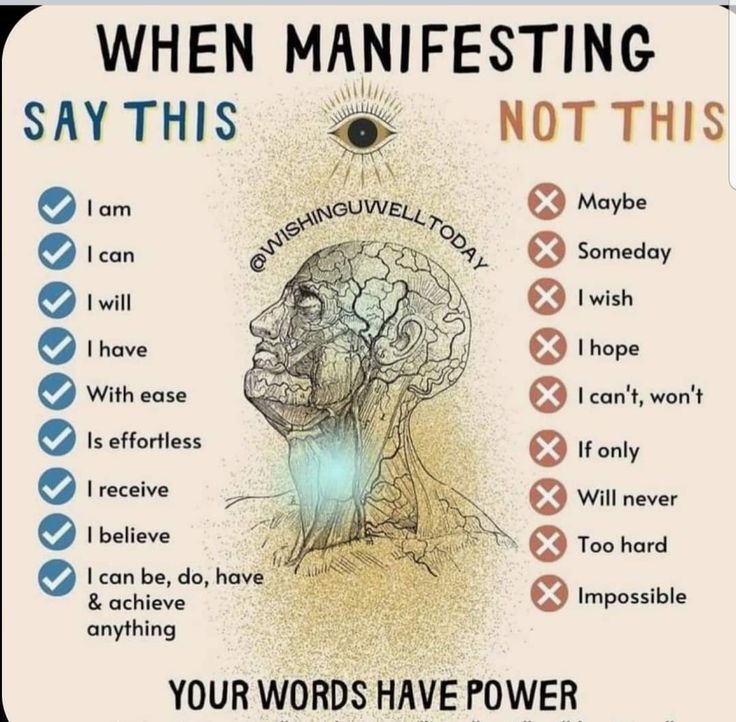Visualization is obviously familiar to you if you’re planning your life, making goals, forming a new habit, or merely wanting to do your best.
Visualization is one of the strategies that are recommended by leading people in their fields, in sports, business, art, and politics.
And it is such a simple but bright method to set one’s mind to achieve success and close the distance between you and your goal.
For a very long time, people of the modern era have been using manifestation techniques to express their intentions using the energy of the universe.
Both Egyptians and Vedas used visualization and symbolic writing, though Egyptians might stand out as using them still more actively in tradition than Vedas, who also used chanting to draw energy towards goals and aims.
Ancient Greeks applied scripting, or, for instance, writing certain desires as if they were already manifested; To attract benefits to the countryside, native peoples used presentations and events of gratitude.
As we proceed in this guide, we will learn what visualization actually is, why and how it works so effectively to empower every aspect of our existence. While doing so, we are going to be friendly and provide you with information you can use today on the topic of visualization.
Table of Contents
What Is Visualization?

In its most basic form, visualization is the active creation in your mind of seeing yourself performing some task, or achieving a certain goal.
Here images are described as forming mental pictures of how successful life is. No, it’s more than just ringing the bell. It is a conscious process that requires focus, clarity of thought process and repetition.
For instance, the player in basketball would close his eyes, imagine making the most perfect spot shot; feeling the ball leave their hand, see it fly and enter the basket.
Often an entrepreneur might paint a picture in their mind about how a product launch will take place, the customers cheer and grow in sales and how busy everyone becomes in the office.
Visualization is wonderful because it gives the person experiencing it the chance to practice success before the act happens in actual life.
Your brain cannot differentiate between actual experience and the floating images formed in your head, and so visualization can ‘fool’ the mind into developing confidence, improving speed, and sustaining enthusiasm.
Why Does Visualization Work?
Visualization works because it plays into the way the brain organizes data and forms relations. Here are three key reasons why visualization is so effective:
Activates the Reticular Activating System (RAS)
The RAS is a set of neurons in your brain which was the first to transmit it as a filter of concentration.
When you visualize your goals you are instructing your RAS to seek out the opportunities and actions that can support your big picture.
Anytime you bring interest to buying a brand of car, do you not notice the high tendency of coming across that specific brand of car frequently. That’s your RAS at work.
Builds Neural Pathways
Adequate specific visualization activates the same neurons as would performing the action itself with a fair degree of realism at that.
And, in the course of the learning processes, They are strengthened and progressively easier when the performances are translated into real life plays.
It is sometimes used in this way to improve performance despite the fact that the person may never actually go onto the playing arena.
Boosts Confidence and Reduces Anxiety
Visualization is to ensure that you get a feel of the success you are likely to achieve and this factor reduces fear of failure associated with repeated Visualization.
If you have once had a mock presentation session, or had an imaginary winning performance of an interview, the moment they come you’re likely to be very calm and sure.
Different Tracks of Visualization


Visualization isn’t just some sort of ‘touchy-feely’ tactic, but it does have its roots in the field of science.
Research says that people who use mental rehearsal to practice activities can do it almost as effectively as if they were physically practicing.
For instance:
One research done on athletes and analyzed their results from practicing showed that the athletes who also practiced their brains did better than those who only physically practiced.
In a piano practice experience, the visualization of playing certain keys works to a Degree almost as effectively as the real practice of the piano keys.
Here, the term “neuroplasticity” refers to the brain’s ability to simultaneously change its structure and functions, undergoing structural changes for goal.
In this way, by visualizing, you start training your brain to support your aims and objectives throughout your business life.
How to Visualize Effectively




Are you prepared to start leveraging visualization as a tool? Follow these steps for an effective practice:
1. Set a Clear Goal
The essence of the GROWTH model is best described by the following steps:
Do not put ‘being successful’ into your mind, it’s better to imagine a concrete goal for example, ‘to deliver a confident speech to 100 people’ or ‘to earn
$ 10,000 per month through my business.’ Clarity is key.
2. Create a Strong Mental Picture
Manifest yourself in your dream job, in a job that is successful as far as you can Imagine it. Engage all your senses.
Visual: What is the scene? Colors, objects, people?
Auditory: What do you hear? Clapping, people shouting, other ambience?
Kinesthetic: How do you feel physically? Are you sure? Comfortable, awake?
Emotional: In what ways do you feel when you succeed? Proud, joyful, accomplished?
So it is true that the cognitive advantage is much higher when you condense your mental picture into a single strong image.
3. Use Present Tense
Try to realise that you are already living in the reality of your goal, and not in the fantasy of the future.
For instance, use thoughts such as “I am leading a successful team,” instead of “I shall lead a successful team.”
4. Incorporate Action
Think not only of the results but of the procedure as well. There is a large difference if you are visualizing running a marathon and actually seeing yourself training, tying laces, and running across the finish line.
This reaffirms the procedures that need to be followed in order to fully make your dream come true.
5. Keep Consistency
This means that it had to be revisited at least once a day with an aim of reactivating the visualization more often again.
Consistency is crucial. They recommend that you spend 5-10 minutes per day doing visualization. Some start with morning or end with night routine, and that is how it can be beneficial for many individuals.
6. Pair Visualization with Affirmations.
Mental imagery always works hand in hand with positive self-talk. For instance, when visualizing a promotion tell yourself things like ‘I am competent and can lead my team.’
Here’s how you can adapt visualization to different areas of your life:
1. Career Success
Imagine yourself in the workplace, getting the job done well, being acknowledged, or heading a great project.
Think about how it will be to network with full assurance at events or how to ace the interviews.
2. Health and Fitness
Tend to think of yourself exercising to meet your fitness goals … running, lifting weights, or performing yoga.
Can you see yourself consuming healthy food, exercising, or having lots of energy?
3. Personal Growth
Think of yourself as being capable in a new activity, as a reader, or as a journaler.
Describe you, yourself and when facing these challenges you are composed and strong.
4. Relationships
Try and picture other possible forms of positive contact with friends, family, or sexual members of the opposite sex.
Study the strategies of how to communicate and establish meaningful relationships, picture yourself.
5. Financial Abundance
Imagine yourself being able to balance, budget, invest and become financially independent.
Think of the specific lifestyle, which is provided by money: traveling, having your own house, etc.
# How to Address Some of the Most Difficult Visualization Issues
Of course, there is usually some kind of struggle anywhere when one begins with visualization. Here’s how to tackle them:
“My mind keeps wandering.”
It is recommended that you should begin working with rhymes in 1-2 minutes of practice per day and gradually increase it. It is recommended to breathe freely before starting the visualization.
“I can’t picture things clearly.”
Of course, visualization is not only observation. It involve other strange things such as the sense of hearing or feeling to make the experience complete.
“It feels fake or forced.”
If we are using visualization to help us make change then we need to link it to small, real-world changes. For instance, if you are idea mapping on ‘writing a book’ then writing a paragraph daily would be the perfect way to visualize.
Success Stories
Let’s take inspiration from people who’ve mastered visualization:
Michael Phelps
The Olympic swimmer took time to practice visualization of races, every process was visualized so the swimmer remained patient even when things went wrong during the competitions.
Jim Carrey
Jim’s comedy mentor once gave him $25 and told him to look at it very carefully; then put it away for five years, never look at it again — but always picture making that much money for acting services rendered. Several years later he got exactly that, for the role in the movie.
Oprah Winfrey
Oprah has described how she has used the process for creating profitable opportunities and achieving ones dreams.
Conclusion
Do not waste more time and start your visualization journey today.
Visualization is an effective, simple procedure available to anybody aimed at converting dreams into realities.
Looking at success is more than just picturing it; it is also about channeling the spirit, feeling and will to do it. Practice makes it become more second nature the more you are exposed to it.
So why not start today? Spend a moment now and imagine who you want to be or how you want to live, and then begin moving in that direction. Your future self must thank you for it.







No Comment! Be the first one.